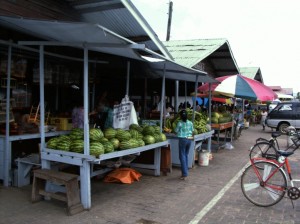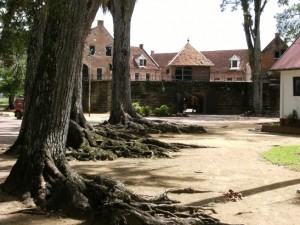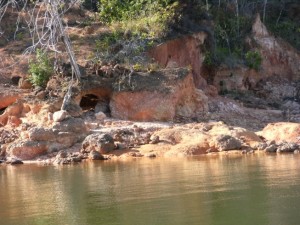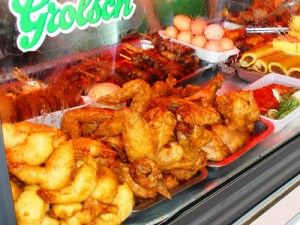 the Travel Enthusiast
the Travel Enthusiast
- 25 Sep
itachan in Travel Planning | 1 COMMENTOff the beaten path: Suriname
 Some countries attract billions of tourists every year, and some simply don’t, and it’s not always a matter of how many attractions they posses. And while for the mainstream, these countries hold little importance, they are a haven for backpackers and tourists who want to get off the beaten path every once in a while.
Some countries attract billions of tourists every year, and some simply don’t, and it’s not always a matter of how many attractions they posses. And while for the mainstream, these countries hold little importance, they are a haven for backpackers and tourists who want to get off the beaten path every once in a while.Suriname hasn’t made a name for itself in the international tourist section, but not because it lacks natural beauties, cultural heritage or historical sites. Suriname calls itself ‘the beating heart of the Amazon’, and indeed it is an lovely mix of colonial cities, pure jungles and a lively, multicultural atmosphere.
 When it comes to geography, Suriname has a little bit of everything, except for mountains. The highest elevation in the country is about 1000 meters, but to compensate for the lack of snow-covered peaks, Suriname has lots of lush rain forests, mangrove swamps and plains.
When it comes to geography, Suriname has a little bit of everything, except for mountains. The highest elevation in the country is about 1000 meters, but to compensate for the lack of snow-covered peaks, Suriname has lots of lush rain forests, mangrove swamps and plains.Many parts of the country haven’t been marred yet by technological and industrial development, so the fauna and fauna are very diverse, and plentiful.
There are several rare and endangered species in Suriname, and if you’re lucky you will chance upon them even if you’re not on a guided tour. Matapica and Galibi beach reserves are great for a bit o’ exploring, especially since you can see some amazing giant sea turtles there. Other interesting creatures you might meet: jaguars and snakes (hopefully only from afar), tapirs and a huge variety of tropical birds.
 Trekking and exploring are great pass times in Suriname, but let’s not forget the urban element either. Paramaribo is a beautiful 17th century colonial town replete with great examples of Dutch, British, French and Spanish architecture. Points of interest include the Presidential Palace, the Synagogue dating back to the 17th century, the Roman Catholic Cathedral, several parks and marketplaces filled with exotic fare.
Trekking and exploring are great pass times in Suriname, but let’s not forget the urban element either. Paramaribo is a beautiful 17th century colonial town replete with great examples of Dutch, British, French and Spanish architecture. Points of interest include the Presidential Palace, the Synagogue dating back to the 17th century, the Roman Catholic Cathedral, several parks and marketplaces filled with exotic fare.Albina, on the Maroni river, is also a very interesting place, and since it is connected to the nearby Saint Laurant du Maroni (in French Guyana), you can stone two birds at once. Fisherman’s villages are also worth seeing, even of they’re not exactly on the traveled path.
The most exciting feature of Suriname is its cultural diversity, and not many other countries in the world can compete with that. The majority of the population is East Indian, with large numbers of Creole, Javanese , Amerindians, Chinese and Maroons, who are the descendants of the West African slaves brought there by colonists in the 17th and 18th centuries.
Dutch is the official language of Suriname, but many
 people speak English, and you’re also in luck if you speak any of the individual languages of the ethnic groups in the country.
people speak English, and you’re also in luck if you speak any of the individual languages of the ethnic groups in the country.This amazing diversity is best reflected in the cuisine, which, as expected with all the different influences, is incredible. Exotic fruits, seafood and cassava (the root of the manioc), sweet potatoes, rice, lentils and plantains are the staple foods. You should try the pom, a chicken dish made with taro, another plant tuber, the bakabana (fried plantains with peanut sauce) or goedangan, a delicious and fresh vegetable salad with coconut dressing.
- Flights
- Hotels
- Packages
- Cars
- Cruises
travel search by Travelgrove (get this widget)You might also like

Dear sir, madam I was looking at youre photo about Suriname and I thought it would be a great photo above and article about Suriname Fruits. If you give permission I will add a link to your website , greationgs Frank Ribot